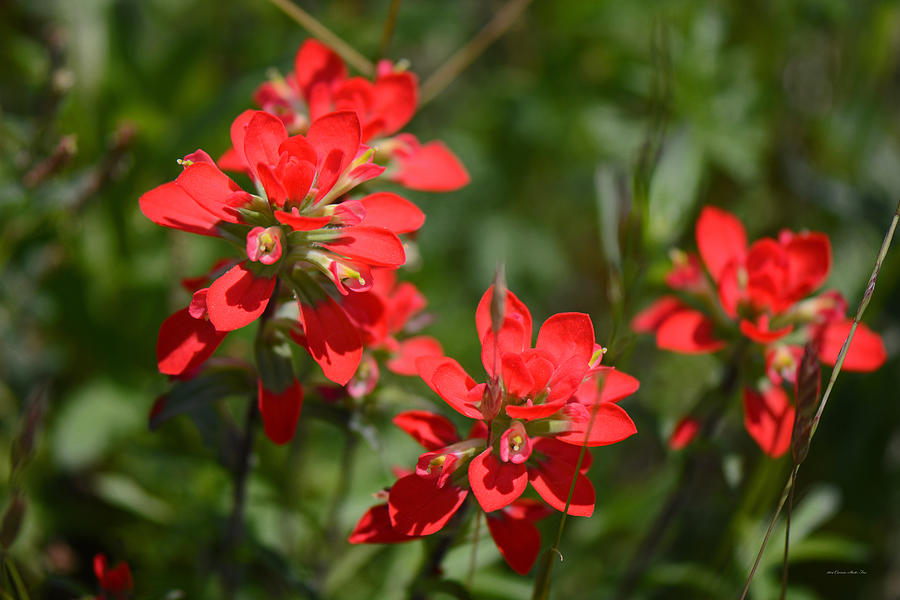

The flowers have no scent but bees and hummingbirds are attracted to the color and abundant nectar supply at the base of the flower tube. Crassula falcata commonly called Propeller Plant or Scarlet Paintbrush Plant is a single-stemmed plant which bears gray-green, succulent, propeller-shaped. However, they can survive without a host plant. This increases the ability to tolerate dry conditions and expand their geographical range. They tap into the root systems of nearby plants for nutrients and water. The species name miniata is derived from “minium” the red lead paint used to paint illuminated manuscripts in the Middle Ages (also the source of the word “miniature”). Castilleja coccinea can survive alone, however, it is not known. coccinea is green and photosynthetic, but grows haustoria that penetrate neighboring plants’ roots to steal various types of nutrients. What's in a name?Ĭastilleja is named for the 18th century Spanish botanist, Domingo Castillejo. Castilleja coccinea, commonly known as Scarlet Indian Paintbrush, is a root hemiparasitic plant native to Illinois and other areas of the central and eastern United States. Scarlet paintbrush is found along forest streams and moist meadows at mid-to subalpine elevations. Of the nearly 200 kinds of paintbrush in western North America, about two-dozen species occur in the northern Rocky Mountains. Paintbrushes can be found in moist to dry soils, from the desert to ridges above treeline. The flowers of this plant can be eaten in small amounts and in moderation. Scarlet paintbrush has red to scarlet bracts and unnotched lance-shaped leaves. The flowers are edible and are sometimes used in salads. In the second year it sends up flowering stems. In the first year it develops a rosette of basal leaves. Scarlet paintbrush, Castilleja miniata, is widespread in our region and blooms from June through August. Scarlet paintbrush is a common name for several flowering plants and may refer to: Castilleja coccinea. coccinea) is a 5 to 24 tall, erect, annual or biennial, hemiparasitic forb that rises on usually a single stem from a taproot rhizome caudex. In most species, plants are covered with very fine hairs.

The tips of the leaves may be brightly colored as though they were dipped in paint - hence the common name. Family: Scrophulariaceae Common Names: common red paintbrush, giant red Indian paintbrush, scarlet paintbrush Castilleja miniata a) inflorescence, b) underground growth, rhizome, c-d) seed, e) seed texture, reticulation, f) flower including. The flowers grow in dense spikes at the ends of 1 to 2-foot tall stems. the plants by the fragile roots when removing the Scientific Name: Castilleja miniata Dougl. Symptoms include nausea, vomiting, fatigue, and foul breath. Consuming large portions of the plant may lead to acute selenium toxicity. Paintbrush grows in clumps from a woody root crown. While it’s not toxic, the Indian paintbrush contains high levels of selenium. Showy flower spikes grow Colorful yellow, red, or pink bracts surround small, inconspicuous flowers. While the various species can be difficult to tell apart, paintbrush is easily distinguished from other wildflowers. Paintbrushes are one of the showiest western wildflowers.


 0 kommentar(er)
0 kommentar(er)
